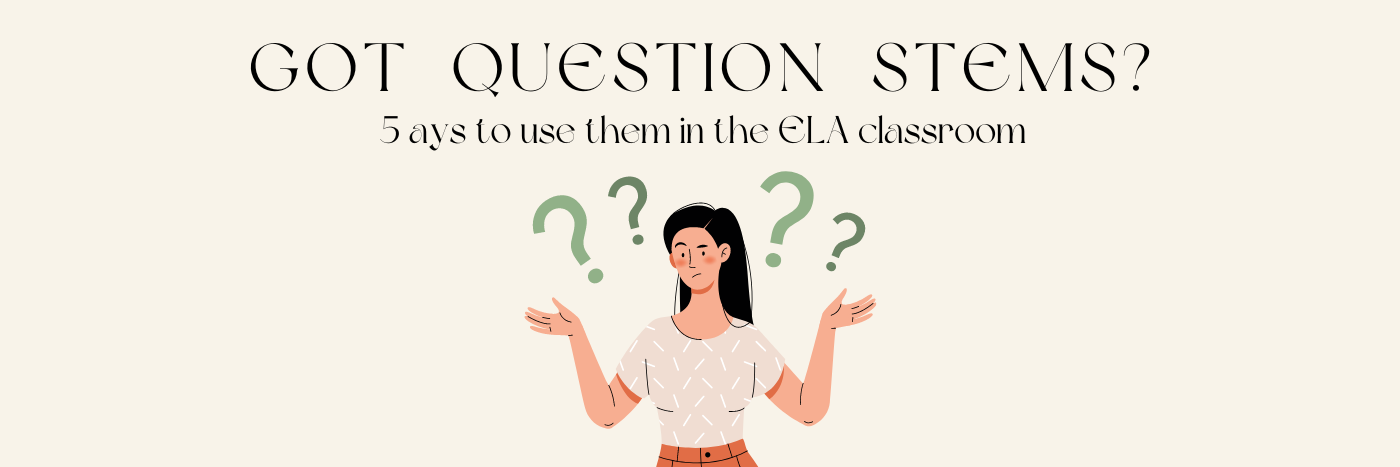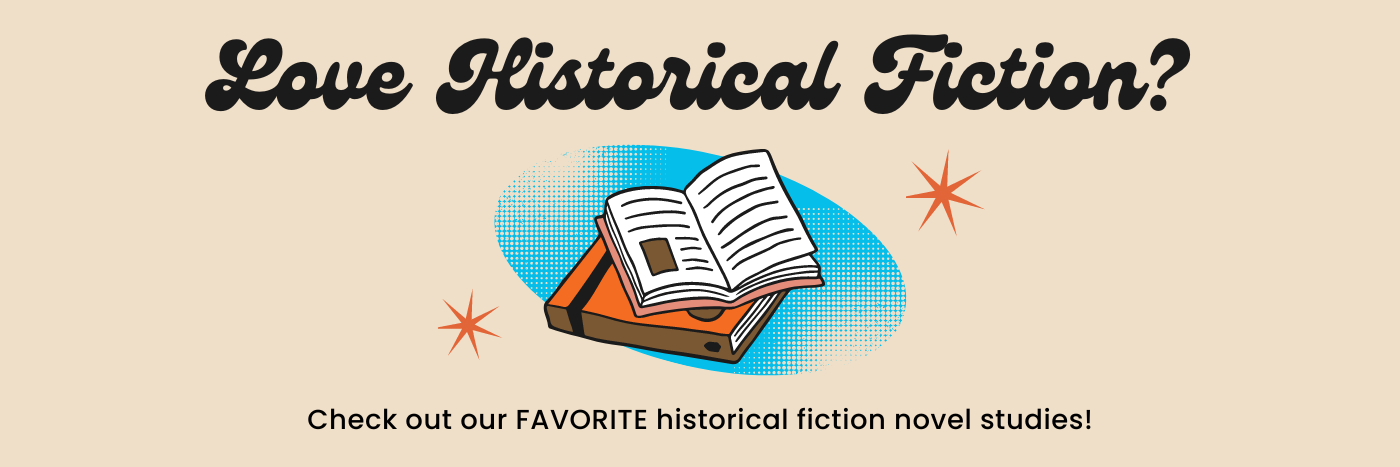
Plan Classroom Novel Studies with These 4 Factors in Mind
After selecting a novel and answering the 5 questions posed in this article and 5 more questions in this article, you’ve finally chosen a book to teach in class, right? Well, yes, but it’s also not so simple. Book selection is a meticulous process, but it deserves our utmost care and contemplation. There are several additional factors to consider when finalizing book choices for your students. After all, our goal is to develop an instructional plan for the entire year that exposes students to meaningful literature.
Factor 1 | Thematic Arc
The first factor to consider when selecting 6-7 books to teach over the course of the year is thematic arc. How do the novels connect with one another? What lesson, message, topic, or issue do they all address? By choosing novels that loosely connect, you will automatically create a learning experience for students that is in-depth, analytic in nature, and purposeful. Just by picking the novels with shared themes, students will have countless opportunities to make connections that span an entire year. They will be able to tie links from each book to that central thread. That is challenging and rewarding work, for both of you and them.
Now, what might a thematic arc look like or entail? Examples of thematic arcs include social justice, historical fiction, finding home, identity (self and society), coming of age, morality, and many, many more. Thematic arcs can take on all different forms and topics. Consider the topics, ideas, or concepts you want your students to loosely focus on and explore over the course of the year. The focus of these explorations become your desired thematic arc. One final note on thematic arcs – beware of burnout! It can be easy to list a ton of options or ideas but more is not always better. There’s value in going deeper with students as they thoroughly examine various facets of an arc.
It is also important to remember some arcs are already baked into your year-long plan. Remember Question 1: Does this novel help create an inclusive and diverse curricular experience for students? Since you’ve already determined yes, diversity will be one thematic arc that naturally connects to all your chosen texts. The key – with any and all arcs – will be for you to highlight the thread(s) you’ve identified for students and guide them in making connections to it.
Factor 2 | Text Complexity Continuum
Your novels’ text complexity should follow a continuum over the course of the year. If possible, novels should increase in complexity as the year progresses, giving students the opportunity to grow and improve their comprehension, analysis, and critical thinking abilities. Increased text complexity is complicated by Factor 1 – Thematic Arc. You may find that in order to honor your chosen thematic arc, more complex books may need to be taught before others. That is ok! In this case, consider how paired texts can be used. A certain selected novel could be perfect for a read aloud where you later have a deeper hand in guiding students to apply their understanding of literary skills to it. Meanwhile, the chosen paired texts could be at a complexity level that allows students to work more independently. There are many possibilities. This can make matching tricky, but it’s also liberating. You can get creative to forge a path on the continuum that allows students to engage at the right levels of challenge at the right moment. Then, the books will become vehicles for pushing your students to succeed at an ever-increasing level of challenge.
Factor 3 | Checking Boxes & Utilizing Paired Texts
Every classroom context is different, especially if school, district, and state mandates limit or dictate the instructional materials teachers can utilize. I have been on the receiving end of such mandates, even getting in trouble for teaching To Kill a Mockingbird one year. Why? It was a novel; it was not a textbook. It wasn’t the words on the page that were the issue; it was the fact I wasn’t on the right page of a different, mandated text. The fact the designated textbook was designed and written at a reading level two grades below my students did not matter. I did not give in to my administrator’s demands (sorry I’m not sorry) because I wouldn’t have been doing right by my students. The whole incident only strengthened my resolve to use novels. In fact, it made me want to use more novels. I quickly found text pairing was an effective tool for students and an easily defendable alternative to the asinine policies of district mandates because kids would always be “synthesizing.”
The question became how and where in the curriculum to add these texts. The answer was straightforward: have students read texts at once. In this case, more is better. The key is compatibility. The two texts should speak to each other about the thematic ideas you are exploring. You have to be deliberately in making the match in order for the connections between the pair to be possible. Having students synthesize across them is not just good teacher speak toward administrators. It is powerful learning, and it is a hallmark of a thorough, in-depth educational experience for your young people.
Factor 4 | Book & Unit Length
A final, important consideration when selecting novels is text length. Remember that you are looking across the year. You have lots of big ideas you want students to explore and amazing texts you want them to read. Ideally, novel units take between 5-6 weeks to complete. If you cut a unit short, you run the risk of not giving the students the opportunity to explore the book in the depth it deserves. If you run a unit long, you will not be able to give another book the treatment it deserves. Students also may struggle to stay invested and engaged in the work. Therefore, when planning your year, you want to be mindful of when you can accomplish what with your novels. For instance, long novel might require work to be completed outside of the classroom in order to stay within the 6-week unit length. This means its complexity should be at a level that would allow for independent work, like I mentioned in Factor 2.
And that is the point of these Four Factors. Like the year-long experience you are designing for your students, everything connects. Each factor influences the others, but you can give different ones different weights. This is the beauty of the challenge. Ultimately, it’s always up to you to decide how you want to shape your students’ learning experience and which factors you want to give the greatest consideration. You you know better than anyone what your students need and what will captivate them.
Need novel studies to help address these factors and more? Check out the LIT Lessons Novel Studies below. They’re perfect for a year-long plan.
More Blog Posts
It’s time for the annual LIT Lessons Novel Study Giveaway! Year-over-year students grow and change, and those changes are often most pronounced when a new school year begins. It’s a fresh start and a restart. The message of Restart by Gordon Korman captures the spirit of new beginnings, evolving identity, and the universal experience of growing older.
Many ELA question stem resources provide vague sentence starters or surface level prompts to encourage students to engage with a text. Oftentimes, these resources lack true depth and rigor, which means students are not being adequately challenged to critically think about a text.
Middle grades historical fiction novels have come a long way from the books available ‘decades’ ago. In fact, this growing genre is now bursting with fantastic, inspiring, and insightful novels. It comes as no surprise that these books are finding their way into middle school ELA curricula…





